What is a sales funnel and how does it work?
Get a breakdown of the popular sales funnel model and what it can do for your business
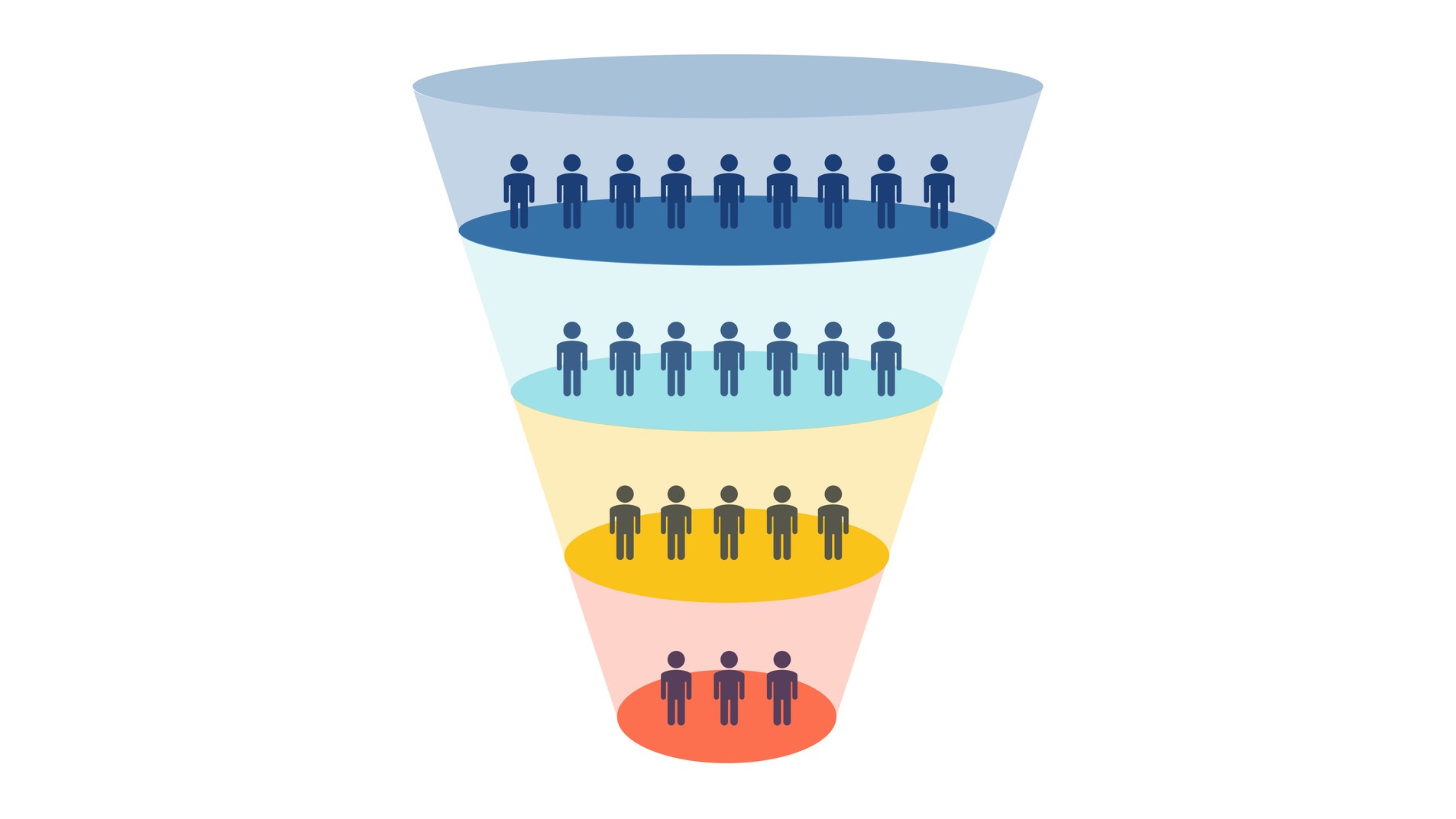
What is a sales funnel?
A sales funnel takes prospects through various stages of their buying journey. You can track a customer’s journey by using customer relationship management (CRM) software.
What does a sales funnel do?
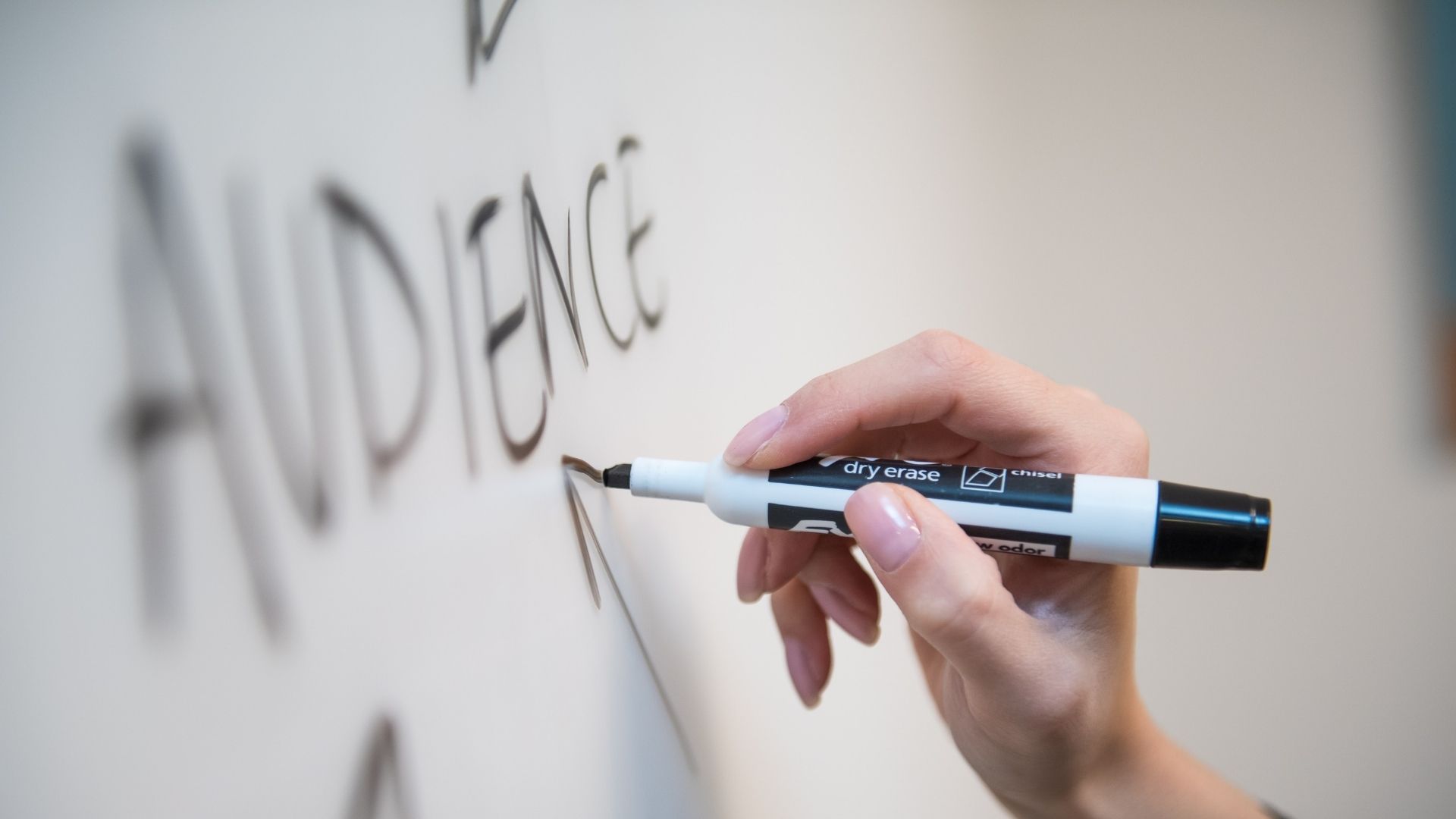
A sales funnel offers:
- A five-stage process: Awareness, Interest, Decision, Purchase, and Repurchase.
- A way of categorizing and interacting with your target audience based on the buying stage they are at.
- Strategies that optimize the conversion rate at each stage, which can include online advertising, email marketing automation, deal negotiation, tracking and analytics, and using sales software such as CRMs.
- An opportunity for sales and marketing teams to collaborate on high-value leads, using a centralized contact and pipeline database.
- A reminder to prioritize and nurture leads that show interest in your business—for example, lead interest may be expressed by downloading a whitepaper or making a product inquiry.
- A systematic approach to ensure valuable leads don’t drop out of the funnel by enabling you to track customer communications, analyze conversion rates, and learn from high-performance teams.
- An effective way to boost your bottom line and use marketing and sales resources more efficiently.
How departments can use a sales funnel
Sales
For a sales team, the sales funnel is a blueprint for nurturing prospects to the point of purchasing. Based on the stage a prospect is at, sales reps can estimate willingness to buy and prioritize high-value leads.
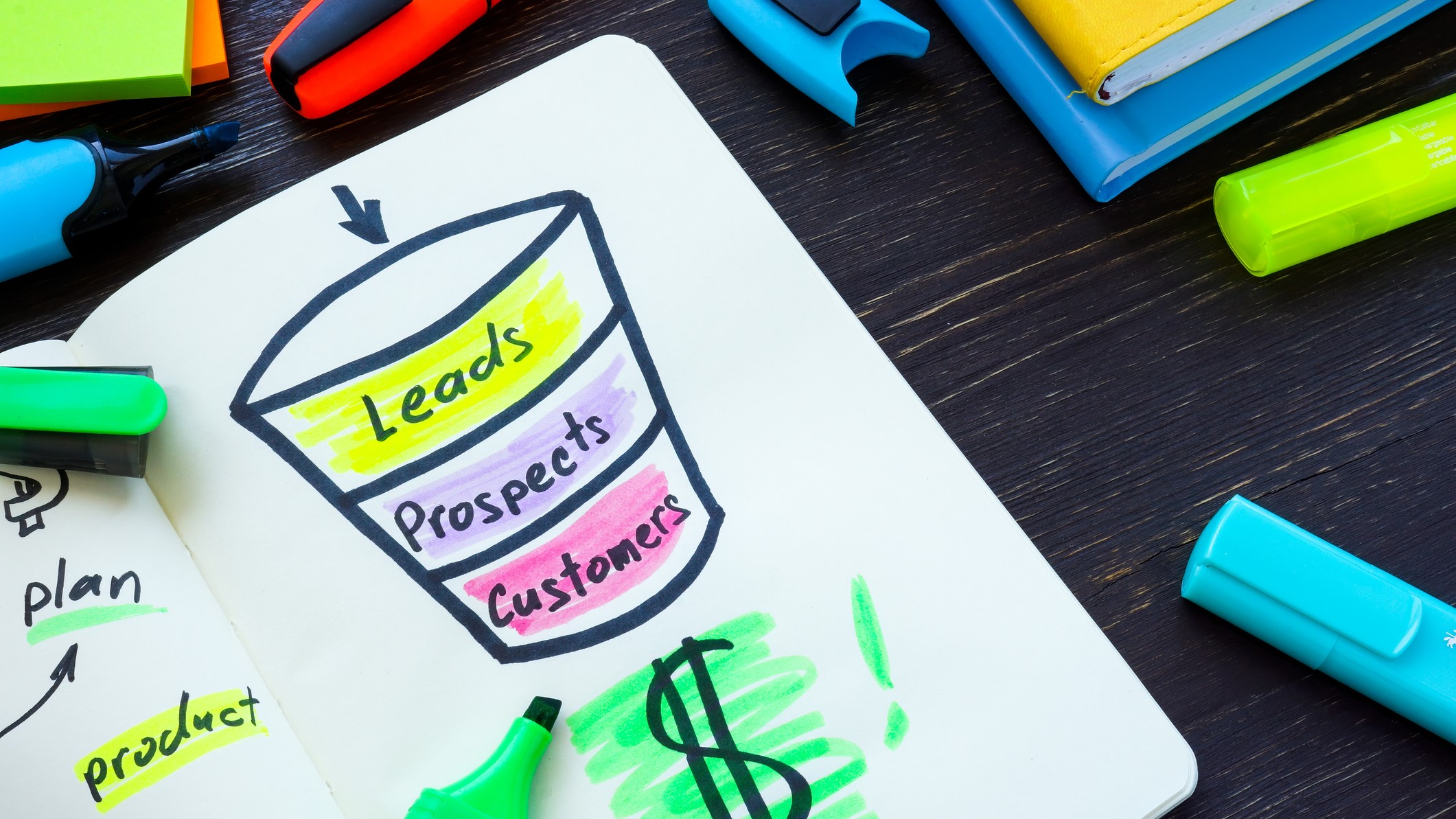
Learn about the latest and best lead generation tools available for businesses today.
Additionally, using a systematic approach to analyzing the company’s pipeline—including tracking stage-by-stage conversion rates—can identify bottlenecks that prevent lead progression. For instance, tracking performance data across sales teams could reveal a higher win rate in a certain territory due to consistent customer follow-ups and shorter response times.
The analogy of a funnel, which suggests that a certain percentage of buyers convert if nurtured correctly, can further motivate sales reps to follow the ABC principle—always be closing—with top leads.
Marketing
The top of the sales funnel is where prospective customers engage with your brand before deciding to buy. Marketing teams can use both digital and physical channels to increase conversion rates at this early stage. For example, automated email campaigns can be triggered when prospects download an ebook, and leads that are most likely to buy can be prioritized in your CRM software.
Sign up for breaking news, reviews, opinion, top tech deals, and more.
It’s vital that marketing teams have an overall view of funnel analytics, including conversion rates per customer vertical and location. This can help determine advertising budgets and how large the top of the funnel should be to achieve desired sales figures.
Finance
The solvency of a business depends on the sales funnel churning out new deals. Finance departments can forecast upcoming revenue based on funnel opportunities and their likelihood to convert. They can also use team performance at different funnel stages to set annual and quarterly financial targets for sales teams as well as budgets for marketing expenses.
Finance must also be kept in the loop with funnel bottlenecks, particularly when resources are stretched thin. For example, if existing sales reps can’t nurture new incoming leads, the team’s hiring budget may need expanding.

How does a sales funnel work?
The sales funnel has five main stages, starting with awareness at the top of the funnel and ending with purchase and repurchase at the bottom.

Awareness
The top of the sales funnel is populated with prospects that come into contact with your business. A business-to-consumer (B2C) organization could achieve this through digital ads and organic web traffic while business-to-business (B2B) sales reps can exchange business cards at an industry event. The purpose of the awareness stage is to collect prospect details such as email addresses and understand where they’re coming from to optimize engagement in future stages.

Interest
A prospect becomes a lead if you pique their interest in your product. To do this, you must follow up the awareness stage with content that’s personalized to the prospect’s needs. For example, ebooks, webinars, and blog posts can be adapted to specific geographic locations, demographics, and business needs. Email campaigns can be automated to educate and encourage purchase.

Decision
For interested leads to reach a decision, your company’s offer must fare better than the competition’s in fulfilling customer needs. To turn the decision into a purchase, a B2C company can utilize tools such as discount codes and delivery deals while a B2B organization might personalize and price the offering based on individualized requirements. Client testimonials and product reviews can further build trust in your business.

Purchase
When you make a sale, the client relationship begins and you can calculate your conversion rate—or what percentage of prospects from the awareness stage end up purchasing. Sales and marketing teams can work with account managers to further understand customer requirements and identify opportunities to cross-sell and upsell. You can also use a successful deal to optimize other funnel stages.

Repurchase
Retaining existing customers bears a lower cost than acquiring new ones, so the repurchase stage can be a quick win if you treat your customers well. For a B2C company, this can include quick delivery and outstanding customer service while a B2B organization can arrange product quality checkpoints and client business lunches.
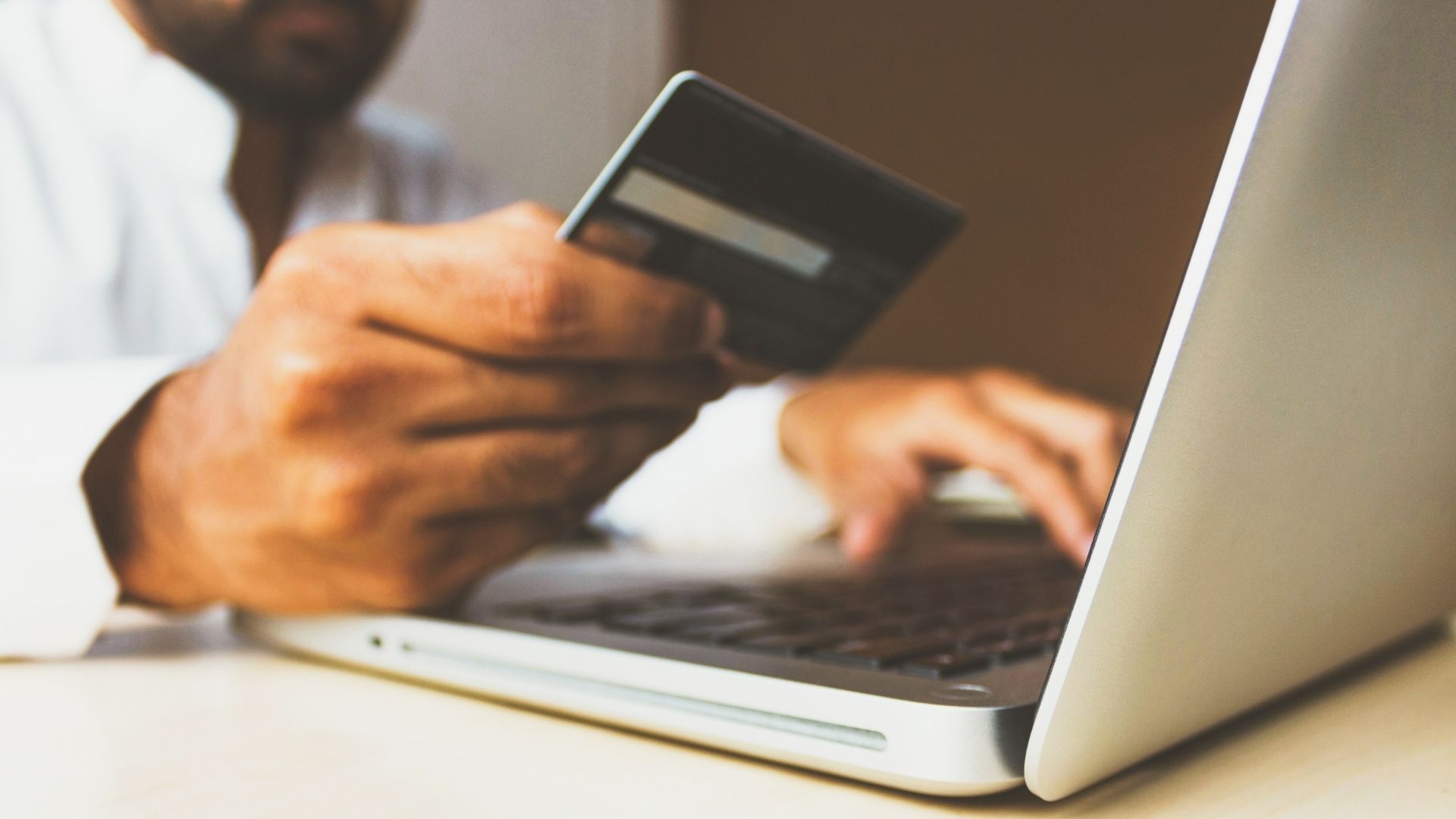
How much does it cost to create a sales funnel?
There are many products that can contribute to a sales funnel, from website builders that can capture leads through blogs and online forms, to email marketing tools that automate and track communications for an optimized conversion rate.
But possibly the most important product investment, especially for a B2B organization, is in a CRM suite that holds all prospect records in one place, including call notes, upcoming tasks, and overall pipeline management.
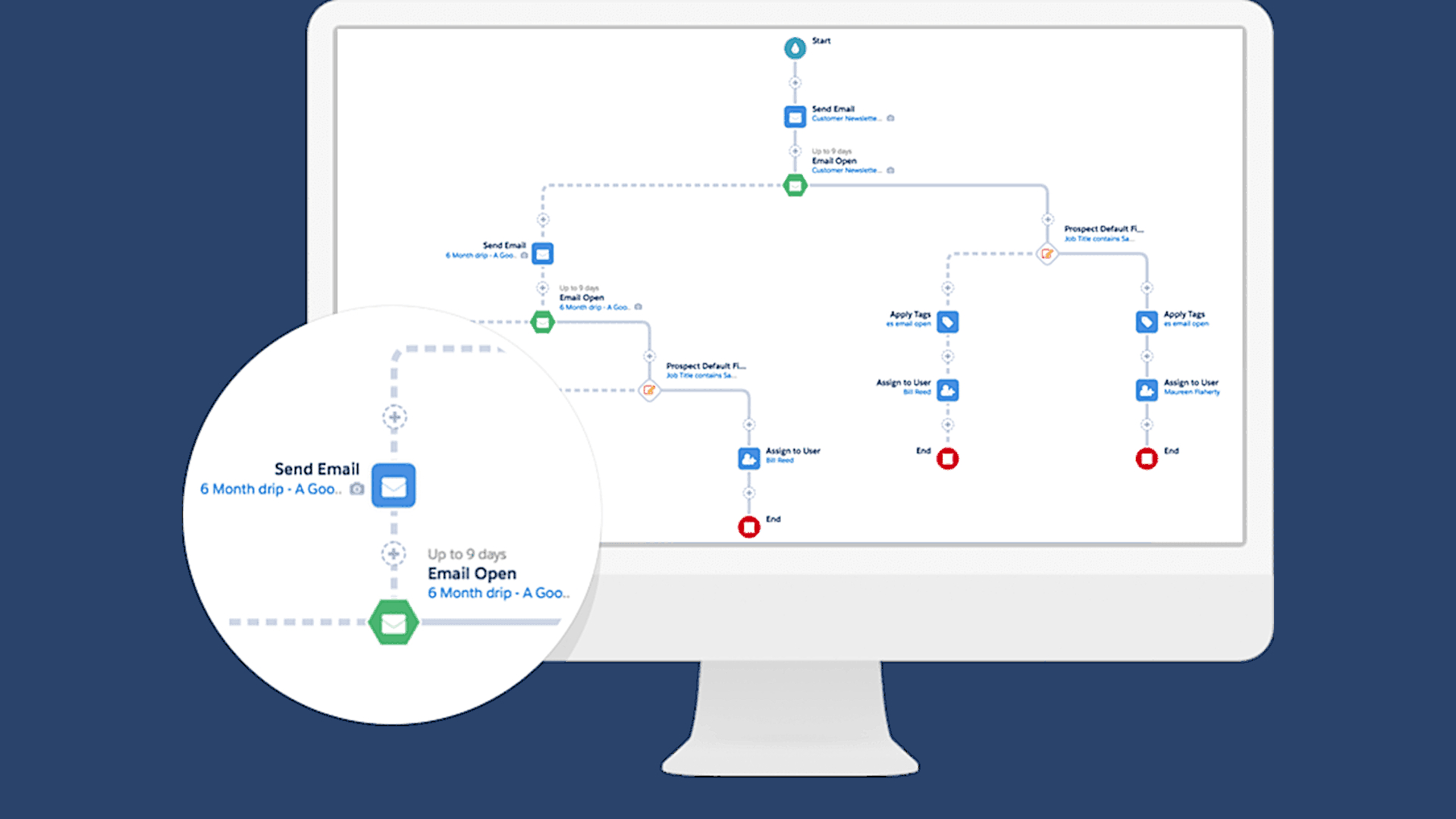
CRM software is usually billed per user on a monthly or annual basis with tiered plans such as Starter, Professional, and Enterprise. Prices can be as low as $8/user/month on Apptivo or $25/user/month on Salesforce, though both are billed annually. Many providers offer a free trial period of up to a month. Some platforms, including Zoho CRM and Hubspot CRM, have effective contact management and marketing toolkits on a forever-free plan.
Sales funnel FAQ
Why is it called a sales funnel?
A real-life funnel is wide at the top and gets narrower towards the bottom. In sales, this image reflects the customer journey from becoming acquainted with the business to making a buying decision. The funnel gets increasingly smaller because only a small percentage of the target audience converts to buyers. Buyers are the ones whose business problems are best solved by your product and those who have been nurtured consistently.
What are the sales funnel strategies?
Effective sales funnel strategies increase the conversion rates between stages, ensuring that high-value leads make a purchasing decision. For instance, a lead qualification strategy helps narrow down the audience to a segment that is likely to buy, thus optimizing the ROI of your advertising budget. You can also use lead magnets to exchange educational assets for contact details, an email marketing strategy to accelerate buying decisions, and cross-sell and upsell strategies to encourage repeat purchases.
What is a sales funnel in CRM?
The sales funnel, also referred to as a pipeline in CRM software, often offers a comprehensive view of the customer accounts that may result in sales. Depending on the analytics capabilities of the product, you may even access a revenue forecast based on estimated conversion rates. The CRM pipeline is generally populated with information about leads and past communications, which can help your sales reps prioritize accounts and close more deals.
What is a sales funnel example?
During the awareness stage, a prospect arrives on a company’s website. They move into the interest stage by submitting a lead form. The business can then use automated email campaigns to persuade the prospect to take further action—for example, joining a webinar. The lead then moves into the decision stage, where product details and client testimonials are provided. A sales rep then closes the sale and stays in the loop to create opportunities for repurchase.
How do you create a sales funnel?
You can use the three Ps principle—people, process, and product—to create an effective sales funnel. How you use them will depend on your business model and size. The key is to plan your resources for each funnel stage. This can include collecting contact details via organic and paid traffic, sending personalized communications, automating sales tasks, and optimizing for higher conversion rates.
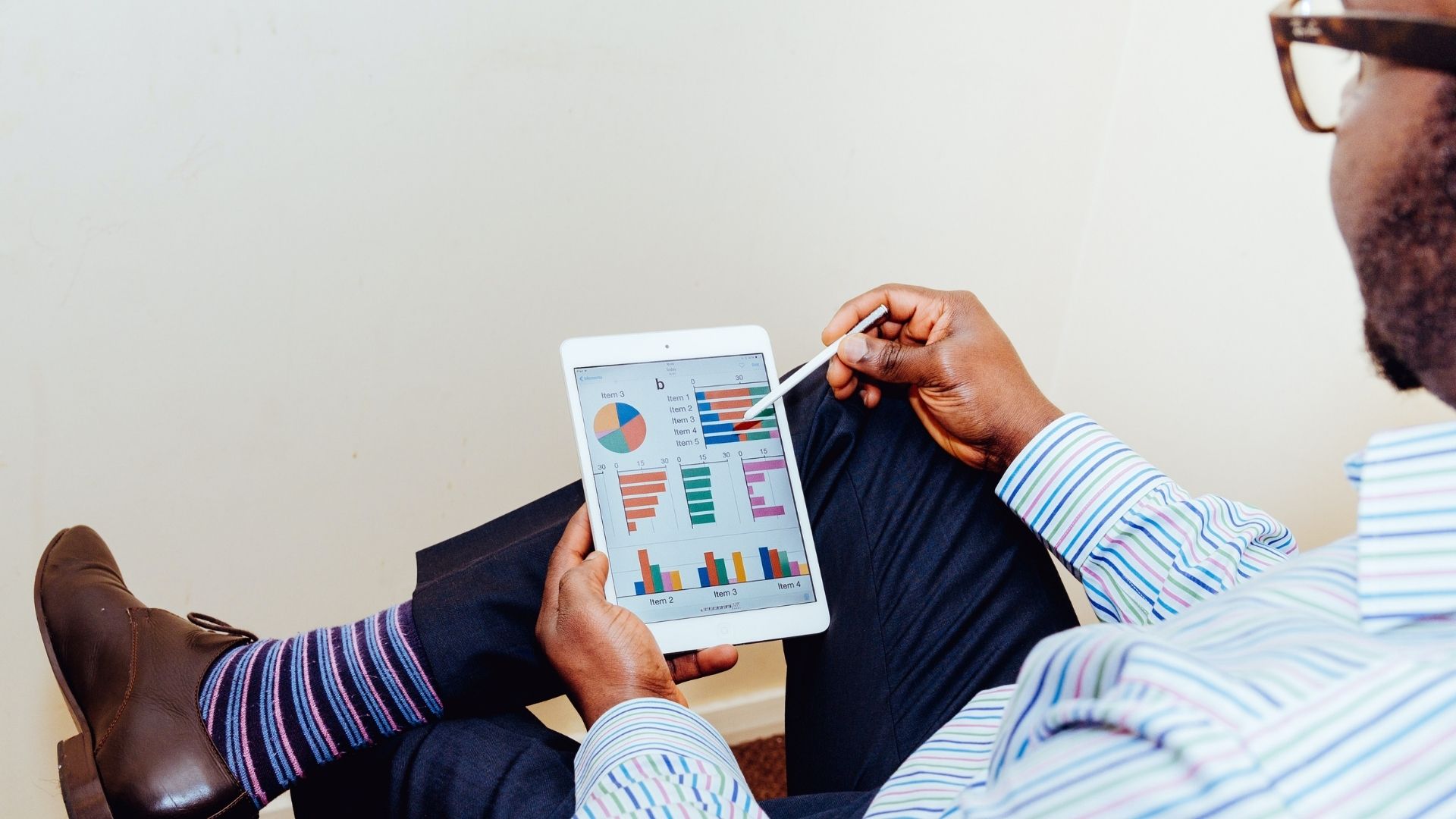
Main takeaways
- The five stages in a sales funnel—awareness, interest, decision, purchase, and repurchase—delineate a customer’s interaction with your brand.
- Each funnel stage is optimized differently. Digital advertising and email campaigns capture leads at the top. The bottom funnel may involve client requirements and pricing.
- Prospects can drop out of the funnel if they are not nurtured effectively. Conversion rate analytics could suggest improvements in lead prioritization and email optimization.
- Remember the three Ps when creating your sales funnel: people, process, and product. CRM software can provide contact management, communications tracking, and email marketing.
- Departments can work together to build and optimize the sales funnel. Aligning on target audience, expected revenue, and budget constraints is key.
Further reading
You can learn more about nurturing customers from our articles on What is CRM software? and What is marketing automation? as well as our best free CRM buying guide.
For more sales funnel tools, check out our round-up of the best contact management software and the best webinar software.

Ioana holds a BSc in Business Management from King's College London and has worked for 4+ years as a management consultant in the industries of technology, media and telecoms. Ioana is also a successful entrepreneur, having launched several social enterprises. Writing interests include market research and planning, start-up culture and ethics, agile methodology, and financial modelling. No stranger to tech and hackathons, she is also an accomplished fintech and SaaS writer